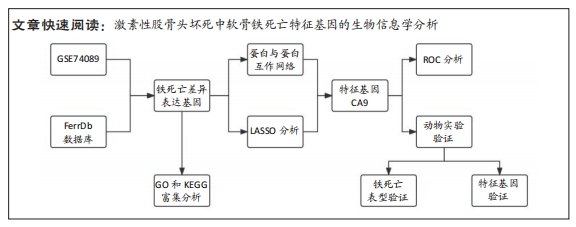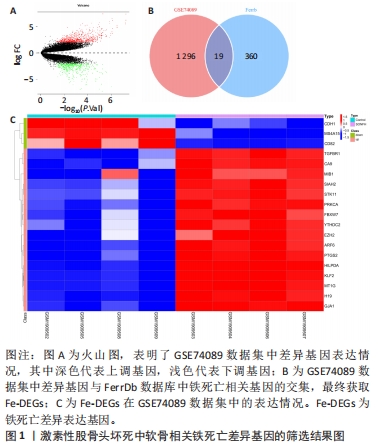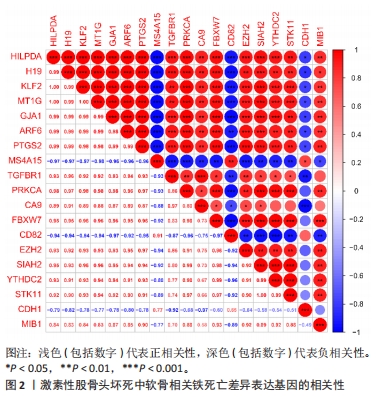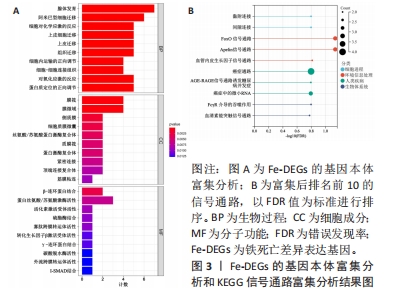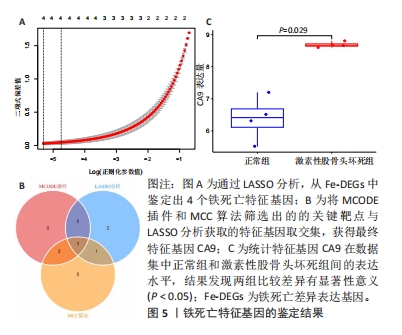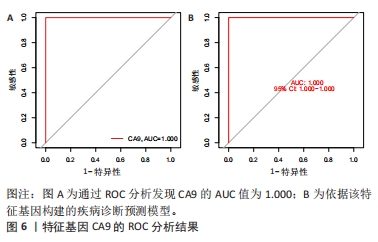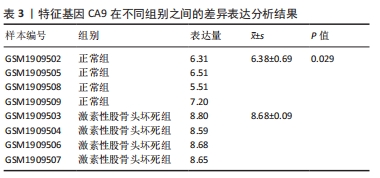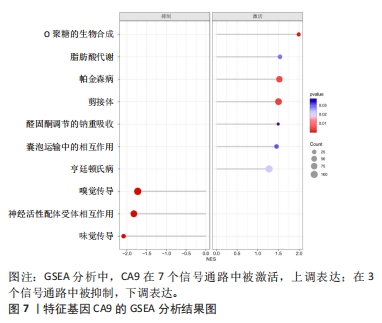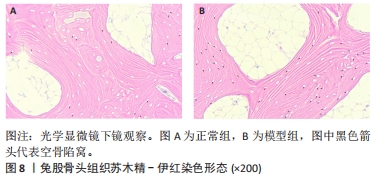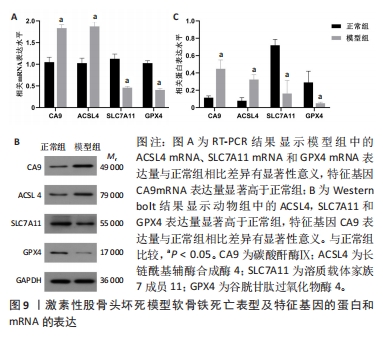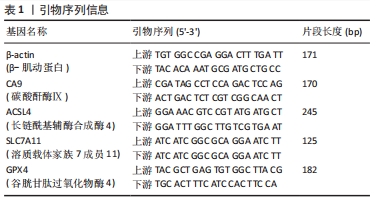[1] ZHAO D, ZHANG F, WANG B, et al. Guidelines for clinical diagnosis and treatment of osteonecrosis of the femoral head in adults (2019 version). J Orthop Translat. 2020;21:100-110.
[2] MOTTA F, TIMILSINA S, GERSHWIN ME, et al. Steroid-induced osteonecrosis. J Transl Autoimmun. 2022;5:100168.
[3] CHANG C, GREENSPAN A, GERSHWIN ME. The pathogenesis, diagnosis and clinical manifestations of steroid-induced osteonecrosis. J Autoimmun. 2020;110:102460.
[4] KANEKO K, CHEN H, KAUFMAN M, et al. Glucocorticoid-induced osteonecrosis in systemic lupus erythematosus patients. Clin Transl Med. 2021;11(10):e526.
[5] CUI Q, JO WL, KOO KH, et al. ARCO consensus on the pathogenesis of non-traumatic osteonecrosis of the femoral head. J Korean Med Sci. 2021; 36(10):e65.
[6] WANG QR, YANG ZY, ZHANG WL, et al. Abnormal hyperplasia of chondrocytes in a rat model of glucocorticoid-induced osteonecrosis of the femoral head. Eur Rev Med Pharmacol Sci. 2022; 26(18):6536-6549.
[7] QIN X, JIN P, JIANG T, et al. A human chondrocyte-derived in vitro model of alcohol-induced and steroid-induced femoral head necrosis. Med Sci Monit. 2018;24:539-547.
[8] 赵程锦,周煜虎,王坤正.软骨ADAMTS-7基因上调与股骨头坏死发生之间的相关性研究[J].中国骨质疏松杂志,2017,23(6):727-733.
[9] 史珊,杨学东,方继良,等.股骨头坏死关节软骨损伤MR研究进展[J].中国CT和MRI杂志,2023,21(6):172-173.
[10] WANG P, WANG C, MENG H, et al. The role of structural deterioration and biomechanical changes of the necrotic lesion in collapse mechanism of osteonecrosis of the femoral head. Orthop Surg. 2022;14(5):831-839.
[11] SUN F, ZHOU JL, LIU ZL, et al. Dexamethasone induces ferroptosis via P53/SLC7A11/GPX4 pathway in glucocorticoid-induced osteonecrosis of the femoral head. Biochem Biophys Res Commun. 2022;602:149-155.
[12] LI W, LI W, ZHANG W, et al. Exogenous melatonin ameliorates steroid-induced osteonecrosis of the femoral head by modulating ferroptosis through GDF15-mediated signaling. Stem Cell Res Ther. 2023;14(1):171.
[13] 杜晨阳,李慧英,汪利合,等. “三补一活”方干预兔激素性股骨头坏死作用机制研究[J]时珍国医国药,2021,32(10):2369-2373.
[14] 蒋玮,曹林忠,邬明峻,等.激素性股骨头坏死动物模型的建立及评价[J].中国实验动物学报,2019,27(6):799-804.
[15] LOCKHART R, TAYLOR J, TIBSHIRANI RJ, et al. A SIGNIFICANCE TEST FOR THE LASSO. Ann Stat. 2014;42(2):413-468.
[16] 郭雪峰,于睿,任艳玲.基于“成骨-成血管耦联”理论探讨中医药防治激素性股骨头坏死的科学内涵[J/OL].中华中医药学刊:1-9.
[17] 孙懿,赵海燕,成杰,等.激素性股骨头坏死发生机制的研究进展[J].中国矫形外科杂志,2023,31(1):58-62.
[18] MA JX, HE WW, ZHAO J, et al. Bone microarchitecture and biomechanics of the necrotic femoral head. Sci Rep. 2017;7(1):13345.
[19] ŞAHIN N, ÖZDEMIR ÇIÇEK S, PAÇ KISAARSLAN A, et al. The effect of intra-articular steroid injection on the cartilage and tendon thicknesses in juvenile idiopathic arthritis. Mod Rheumatol. 2023. doi: 10.1093/mr/road093.
[20] LEMOS SE. Periarticular and intra-articular injections may do the right thing for patients’ pain but may be the wrong thing for their articular cartilage: be careful. Arthroscopy. 2022;38(6):1996-1998.
[21] VON MäSSENHAUSEN A, ZAMORA GONZALEZ N, MAREMONTI F, et al. Dexamethasone sensitizes to ferroptosis by glucocorticoid receptor-induced dipeptidase-1 expression and glutathione depletion. Sci Adv. 2022; 8(5):eabl8920.
[22] 胡康一,曹林忠,万超超,等.NLRP3炎性小体在激素性股骨头坏死骨代谢及其稳态中的作用[J].中国骨质疏松杂志,2023,29(5):701-706.
[23] LO ACY, YANG M. Lycium barbarum polysaccharides and ferroptosis: jumping into the era of novel regulated cell death. Neural Regen Res. 2022; 17(7):1473-1474.
[24] STOCKWELL BR. Ferroptosis turns 10: emerging mechanisms, physiological functions, and therapeutic applications. Cell. 2022;185(14):2401-2421.
[25] JIANG X, STOCKWELL BR, CONRAD M. Ferroptosis: mechanisms, biology and role in disease. Nat Rev Mol Cell Biol. 2021;22(4):266-282.
[26] LIU T, WANG P, YIN H, et al. Rapamycin reverses ferroptosis by increasing autophagy in MPTP/MPP+-induced models of Parkinson’s disease. Neural Regen Res. 2023;18(11):2514-2519.
[27] TANG D, CHEN X, KANG R, et al. Ferroptosis: molecular mechanisms and health implications. Cell Res. 2021;31(2):107-125.
[28] KUANG F, LIU J, TANG D, et al. Oxidative damage and antioxidant defense in ferroptosis. Front Cell Dev Biol. 2020;8:586578.
[29] CHEN Y, FANG ZM, YI X, et al. The interaction between ferroptosis and inflammatory signaling pathways. Cell Death Dis. 2023;14(3):205.
[30] ROCHETTE L, DOGON G, RIGAL E, et al. Lipid peroxidation and iron metabolism: two corner stones in the homeostasis control of ferroptosis. Int J Mol Sci. 2022;24(1):449.
[31] AKASAKI Y, ALVAREZ-GARCIA O, SAITO M, et al. FoxO transcription factors support oxidative stress resistance in human chondrocytes. Arthritis Rheumatol. 2014;66(12):3349-3358.
[32] HALLETT SA, ONO W, ONO N. The hypertrophic chondrocyte: to be or not to be. Histol Histopathol. 2021;36(10):1021-1036.
[33] CHEN L, NI Z, HUANG J, et al. Long term usage of dexamethasone accelerating accelerates the initiation of osteoarthritis via enhancing chondrocyte apoptosis and the extracellular matrix calcification and apoptosis of chondrocytes. Int J Biol Sci. 2021;17(15):4140-4153.
[34] ALDERA AP, GOVENDER D. Carbonic anhydrase IX: a regulator of pH and participant in carcinogenesis. J Clin Pathol. 2021. doi: 10.1136/jclinpath- 2020-207073.
[35] MOOKERJEE SA, GONCALVES RLS, GERENCSER AA, et al. The contributions of respiration and glycolysis to extracellular acid production. Biochim Biophys Acta. 2015;1847(2):171-181.
[36] JOHNSTON SN, MADHU V, SHAPIRO IM, et al. Conditional deletion of hif-2α in mouse nucleus pulposus reduces fibrosis and provides mild and transient protection from age-dependent structural changes in intervertebral disc. J Bone Miner Res. 2022;37(12):2512-2530.
[37] QUEEN A, BHUTTO HN, YOUSUF M, et al. Carbonic anhydrase IX: a tumor acidification switch in heterogeneity and chemokine regulation. Semin Cancer Biol. 2022;86(Pt 3):899-913.
[38] SILAGI ES, SCHIPANI E, SHAPIRO IM, et al. The role of HIF proteins in maintaining the metabolic health of the intervertebral disc. Nat Rev Rheumatol. 2021;17(7):426-439.
[39] AN Y, LI S, HUANG X, et al. The role of copper homeostasis in brain disease. Int J Mol Sci. 2022;23(22):13850.
[40] LI Y, WANG H, TU C, et al. Role of hypoxia and EGF on expression, activity, localization and phosphorylation of carbonic anhydrase IX in MDA-MB-231 breast cancer cells. Biochim Biophys Acta. 2011;1813(1):159-167.
[41] GALARIS D, BARBOUTI A, PANTOPOULOS K. Iron homeostasis and oxidative stress: an intimate relationship. Biochim Biophys Acta Mol Cell Res. 2019; 1866(12):118535.
[42] 章家皓,刘予豪,周驰,等.氧化应激促进成骨细胞铁死亡介导激素性股骨头坏死的病理过程[J].中国组织工程研究,2024,28(20):3202-3208.
[43] YAN Y, LU A, DOU Y, et al. Nanomedicines reprogram synovial macrophages by scavenging nitric oxide and silencing ca9 in progressive osteoarthritis. Adv Sci (Weinh). 2023;10(11):e2207490.
[44] STOCKWELL BR, FRIEDMANN ANGELI JP, BAYIR H, et al. Ferroptosis: a regulated cell death nexus linking metabolism, redox biology, and disease. Cell. 2017;171(2):273-285.
[45] ZHANG H, ZHANG J, DONG H, et al. Emerging field: o-glcnacylation in ferroptosis. Front Mol Biosci. 2023;10:1203269.
[46] LIU GB, LI R, LU Q, et al. Three-dimensional distribution of cystic lesions in osteonecrosis of the femoral head. J Orthop Translat. 2020;22:109-115.
[47] 黄艺轩,陈浩,薛鹏,等.组织工程治疗股骨头坏死软骨下分离的适用技术[J].中国组织工程研究,2024,28(21):3385-3392.
[48] 张聪敏,任凯迪,张绮雯,等.激素性股骨头坏死易感基因的研究进展[J].中国药学杂志,2022,57(2):85-89.
[49] 田心保,林瑞珠,朱宁.激素性股骨头缺血性坏死的发病机制[J].中国矫形外科杂志,2022,30(10):915-919.
[50] ZHANG Q, YANG J, YANG C, et al. Eucommia ulmoides oliver-tribulus terrestris l. drug pair regulates ferroptosis by mediating the neurovascular-related ligand-receptor interaction pathway- a potential drug pair for treatment hypertension and prevention ischemic stroke. Front Neurol. 2022;13:833922.
[51] CHEN X, LI J, KANG R, et al. Ferroptosis: machinery and regulation. Autophagy. 2021;17(9):2054-2081.
[52] CHEN F, KANG R, LIU J, et al. The ACSL4 network regulates cell death and autophagy in diseases. Biology (Basel). 2023;12(6):864.
[53] ZHANG HL, HU BX, LI ZL, et al. PKCβII phosphorylates ACSL4 to amplify lipid peroxidation to induce ferroptosis. Nat Cell Biol. 2022;24(1):88-98.
[54] URSINI F, MAIORINO M. Lipid peroxidation and ferroptosis:the role of GSH and GPx4. Free Radic Biol Med. 2020;152:175-185.
|
